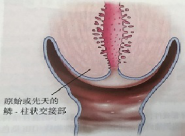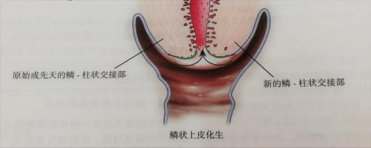Cervical cancer screening is not that simple, these techniques can help you improve sampling quality
时间:2023-10-28
Cervical cytology examination has always been a powerful assistant for cervical cancer screening, which refers to taking a small amount of cell samples from the cervix, processing them, and observing the small early changes of cervical cells under a microscope. The proposal of this technology can be sniped before cancer occurs, greatly reducing the mortality rate of cervical cancer. Although some countries have proposed using HPV as a primary screening method for cervical cancer, cervical cytological examination is still irreplaceable.
Distinguishing between cervical scraping and cervical liquid based cytology
At present, there are two methods for cervical cytology examination: cervical scraping and cervical liquid based cytology, with similar principles. Both methods observe changes in cervical cytology under a microscope after sampling.
The sampling of cervical scrapers involves using a wooden scraper to rotate for one or several weeks at the outer opening of the cervix, scraping the mucosa and secretions from that area. Then, evenly apply the removed secretions onto numbered glass slides and immediately fix them in 95% ethanol for 15 minutes. After removal, stain with Pap staining.
From the sampling process, it can be seen that the wooden scraper used in the cervical scraping blade is difficult to obtain specimens from the squamous column junction inside the cervical canal, and studies have found that up to 80% of cell samples will remain on the scraping blade and be discarded.
Liquid based cytology examination uses a liquid based thin layer cell detection system to detect cervical cells and perform cytological classification diagnosis. It is currently an internationally advanced cervical cytology examination technology. Use a special small brush (with the middle bristles longer than the two bristles) for sampling. The longer part of the bristles extends into the cervical canal, and the shorter part is brushed horizontally on both sides of the outer opening of the cervix. Finally, the brush head is rinsed in a small bottle containing cell fixative or directly placed in the bottle.
Both cervical scraping and TCT are manually sampled, which inevitably leads to various problems during sampling, leading to a decrease in cytological satisfaction rate and affecting diagnostic rate. Therefore, learning how to improve the sampling of cervical cytology is extremely important for obstetricians and gynecology.
The key to improving the quality of cell sampling is to obtain more cells. In March 2017, the Chinese Journal of Obstetrics and Gynecology published an article titled "How to Improve the Quality of Cervical Cytology Sampling", which is very useful for reference. Let's learn together:
Finding the right sampling location is important
The transformation zone is the metaplastic zone of the cervical epithelium, which is the site of intraepithelial neoplasia and cancer in the cervix, also known as the squamous column junction. The transformation zone is the target for cytological sampling, and it is best to take samples near the junction of the new squamous column, taking into account the cervix and vagina, cervical canal, and suspicious areas.
The primitive or congenital squamous columnar junction in women of childbearing age gradually moves outward, exposing the columnar epithelium to the vagina. Over time, it is replaced by squamous epithelium, creating a new squamous columnar junction that can be moved back to the cervical canal. The entire area between the original squamous column junction and the new squamous column junction is called the transformation zone, as shown in the following figure:

Figure 1. Retrogression of the transition zone into the cervical canal in postmenopausal women
Most postmenopausal women's squamous column junction will retreat into the cervical canal, which cannot be directly seen by the naked eye, as shown in Figure 2. Therefore, postmenopausal women should pay special attention to the area of the cervical canal when sampling.

Figure 2 Transformation area for women of childbearing age, as shown by the curved arrow in the figure, with the green area as the sampling area
In clinical practice, when encountering small cervical opening, cervical displacement (especially in young women after cesarean section), postmenopausal cervical atrophy, or cervical deformation after treatment, and the transformation area cannot be seen, cervical forceps can be used to clamp the cervix or locate the cervical position under the guidance of triad diagnosis. Probes or cotton swabs can be used to explore the cervical opening, and then cervical tube brushes can be used for sampling. HPV samplers can also be used to sample deep into the cervical opening.
Appropriate sampling method
(1) The cervical brush is the most skilful to use. Firstly, the cotton swab should be used to wipe off the mucus covering the outer opening of the cervix. If it is difficult to remove the mucus plug from the cervix during the middle of menstruation, oval forceps can be used to remove it. Do not use force to wipe it to avoid damaging the epithelium and causing bleeding. Extend the longer bristle in the middle of the cervical brush into the cervical tube and rotate it clockwise for 5 circles. Then rinse the cervical brush in the preservation solution for at least 10 seconds, press firmly against the bottom of the bottle, and rinse again for 10 seconds.
For severe old lacerations or cervical hypertrophy, ectropion, or severe "erosion" like changes, in addition to brushing samples from the central area, the edge of the ectropion should also be brushed, which represents the transition area from red to pink at the squamous column junction. Use a sampling brush to take samples from the transition area around the edge of the laceration or "erosion" surface, gently sweep it over, and then take cells close to the cervical opening or "erosion" surface.
(2) When using a cell brush or HPV sampling brush, it is appropriate to rotate the cell brush or sampling brush only 1/4 turn (90 degrees) to half turn (180 degrees) to reduce bleeding. In order to collect as many specimens as possible, it can be used in conjunction with a scraper. Place the scraper directly on the cervix and rotate it for at least 1 week. Quickly rinse in the preservation solution for at least 10 seconds, and then use a cell brush or HPV sampling brush to collect cells from the cervical canal.
(3) When encountering excessive vaginal discharge, enlarged cervical canal, or suspected adenocarcinoma in clinical practice, attention should be paid to cervical canal sampling, and cell brushes should be inserted into the cervical canal for sampling. There is also a unique tip for increasing the number of cervical tube cells to be tested: insert the HPV sampling brush into the cervical tube, rotate it 1 turn, and then remove the brush head and rinse it in a small bottle with preservation solution. When there is still secretions on the brush head, take a piece of toilet paper (it must be a toilet paper, no other type is acceptable), wipe the brush head until all secretions are wiped out, and finally tear off the paper that has been contaminated with secretions and put it together in a small bottle for inspection.
Correct sampling timing
1、 Within 3-4 days of clean menstruation, the best time is the second half of the menstrual cycle, as there is less shedding of endometrial cells and less interference with cervical cytology.
2、 When severe cervical vaginitis occurs, sampling is not possible and anti-inflammatory treatment is required.
3、 Sampling is not allowed during menstruation, and sampling during pregnancy should be done with caution.
4、 Repeated sampling is not allowed in the short term, and sampling should be conducted again at least 2 months later.
Sampling precautions
(1) Sexual activity is prohibited within 24 hours before sampling, and vaginal flushing and medication are not allowed for at least 48 hours;
(2) Lubricants should not be used when inserting a vaginal speculum into the vagina;
(3) When sampling, the force should be moderate and bleeding should be avoided. If there is a lot of bleeding, it should be stopped. Dry cotton balls (or swabs) can be used to compress and stop the bleeding before taking it;
(4) Perimenopausal and postmenopausal women should pay attention to cervical tube sampling.
Successful sampling can not only effectively screen for cervical diseases, but also reduce the repetition rate of patients. Learning how to standardize sampling is a key step in improving screening effectiveness.




 鄂公网安备42090202000178号
鄂公网安备42090202000178号